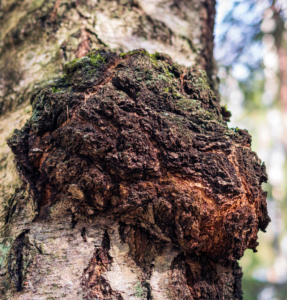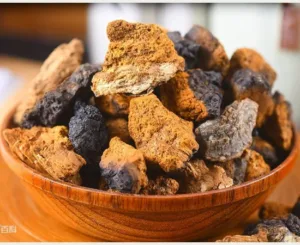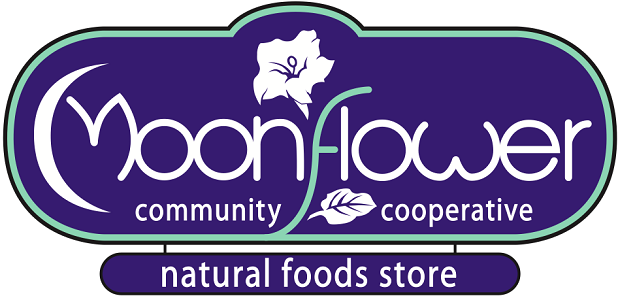
Chaga (Inonotus obliquus) is a type of fungus that grows mainly on birch trees in cold climates, like those of northern Europe, Siberia, Russia, Canada, and Alaska. It has been used for medicinal purposes for centuries, mainly to boost immune and overall health.
While commonly referred to as a mushroom, it is not the fruiting body of the fungus that grows visibly and is harvested. Chaga is actually a parasitic fungus that forms a sterile conk made of woody substrate from the host tree and mycelium. The conk looks like a lump of burnt charcoal with a dark exterior and soft, orange interior. It grows out of cracks or wounds in the tree’s bark created by freeze/thaw cycles or broken branches, where airborne spores land and mature there for 5-7 years before bursting through the bark.
When harvested properly without gouging into the wood, chaga can be cut multiple times from the same site, which decreases the rate at which it harms its host tree. It will regrow in about 5-6 years, until the host tree dies. Chaga becomes more nutrient dense the longer it grows on a tree and contains its highest concentration of the antioxidant melanin in the coldest months of the year, so our supplier Mountain Rose Herbs makes sure to harvest conks during the peak of winter and when they weigh at least six pounds. Since chaga rarely does well cultivated, it must be harvested with care at a sustainable rate.
There have been few studies done on the effect of chaga mushrooms on humans, yet animal and test tube studies have found some promising potential health benefits. This fungus is an antioxidant powerhouse, potentially helping fight the growth of cancer cells by protecting the body from oxidative stress from free radicals. Chaga may also lower cholesterol, blood sugar, and reduce inflammation.
Due to its bitter taste, chaga is typically consumed as a tea or powdered to be used as a supplement. It can be decocted into a tea (a long-simmered infusion rather than a typical infusion of boiling water like most herbal teas), and the chunks of chaga can even be brewed multiple times without losing flavor or potency. Chaga can also be powdered and encapsulated, tinctured, or added to broths, soups, or other beverages. Its slightly bitter, mildly earthy flavor compliments ginger, turmeric, and honeybush. Chaga is low in calories and very high in fiber.
To make chaga tea, combine mushroom pieces with water (roughly 8 cups per ½ oz of dried mushroom) and simmer for at least 30 minutes or until the water is dark like black tea. The used chunks of chaga can be stored in the fridge for future use; a ½ oz chunk can be used at least two or three times before being composted.
Find dried chaga pieces in our bulk herbs and spices department (hint: the jars are organized alphabetically, so you can find chaga under “Mushrooms, Chaga”).
